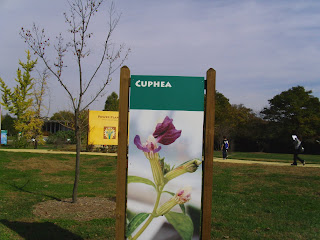 While I'm pleasantly shocked about today's premature (for December) snowstorm, you could say it was predicted by an elderly lady who was passing along some country wisdom. Of course, her forecast for this winter's weather (which, technically, begins the day after tomorrow) included the usual musings about the high number of woolly bear caterpillars sightings this year, to which I gently nodded in agreement.
While I'm pleasantly shocked about today's premature (for December) snowstorm, you could say it was predicted by an elderly lady who was passing along some country wisdom. Of course, her forecast for this winter's weather (which, technically, begins the day after tomorrow) included the usual musings about the high number of woolly bear caterpillars sightings this year, to which I gently nodded in agreement.However, the gray eminence added another aspect to her prediction--she mentioned that the huge number of acorns seen this year meant that winter would be extremely cold. Huh? I'm sure I had a dumbfounded look, 'cause that's the first time I've ever heard the haul of acorns involved in the weather forecast. (Of course, after her speculation, I noticed that many squirrels appeared to take steps to hide those acorns in holes, which I'd never paid attention to before.)
* * *
Just as the acorn lady predicted the extremely cold, snowy weather, I predict that much hot cocoa will be consumed during and after the storm, the only question being how often this delicious, healthful, drink will be quaffed.
Hot cocoa--cheaters' edition
If you don't have hot cocoa mix at home (haven't been able to find the Ghiradelli hazelnut hot cocoa mix), your favorite chocolate milk heated up via microwave makes an acceptable substitute. Also, as chocolate milk may be more helpful in helping people recover from athletic endeavors than Gatorade, it's perfect to drink after shoveling snow. Or while watching the snow. Or after hearing predictions of snow.
Smooth hot cocoa--DIY edition
If you're lacking chocolate milk or cocoa mix, but have a box of Hershey's cocoa at home for cooking, and some milk, you're in luck. The ingredients as listed in the instructions are fine (2 Tbsps. cocoa, 2 Tbsps. sugar, pinch salt, 1 cup milk, 1/4 tsp. vanilla), but fail to mention that your cocoa will turn out lumpy unless you take an extra step.
Whisking the dry ingredients together does no good, even using the tiny whisks I have. Instead, I put the cocoa into a trusty party favor sachet. (Guys can use the more macho mini burlap sack, which can be bought at health food stores.) Then, dunk the sack into milk that's been microwaved for a minute and a half, add the other ingredients, and stir. Let sack sit in milk for a minute or two, then remove. The smooth, tasty result (after transferring milk from a microwave-safe cup):















































